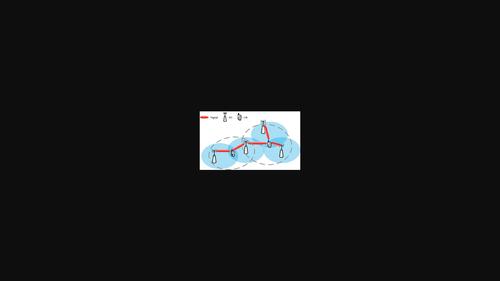当前位置:
X-MOL 学术
›
Trans. Emerg. Telecommun. Technol.
›
论文详情
Our official English website, www.x-mol.net, welcomes your
feedback! (Note: you will need to create a separate account there.)
UcnPowerNet: Residual learning based clustering and interference coordination in 5G user-centric networks
Transactions on Emerging Telecommunications Technologies ( IF 2.5 ) Pub Date : 2021-06-07 , DOI: 10.1002/ett.4324 Jianghui Liu 1 , Hongtao Zhang 1
Transactions on Emerging Telecommunications Technologies ( IF 2.5 ) Pub Date : 2021-06-07 , DOI: 10.1002/ett.4324 Jianghui Liu 1 , Hongtao Zhang 1
Affiliation

|
In 5th Generation and beyond (5G&B) wireless networks, artificial intelligence can be explored to address problems with uncertain, time-variant, and complex features. User-centric network (UCN) can eliminate cell boundaries and reduce interference. And as for the intelligent resource management and interference coordination, the scalability of existing deep learning-based works degrades greatly as the size of the network increases, which requires more layers to be stacked and causes gradient vanishing problem. In this article, a new deep learning-based resource management model, UcnPowerNet, is proposed to approximate iterative algorithms for dynamic clustering and interference coordination in complicated UCN, where multiple residual blocks are concatenated with shortcut connections to asymptotically learn the mapping between input and output. Specifically, a cooperative weighted minimum mean square error (WMMSE) algorithm for UCN is carried out in the real domain to generate large near-optimal training datasets; then we train UcnPowerNet to approximate the output of WMMSE algorithm by minimizing the loss function of mean square error. Moreover, convolutional layer and normalization layer are leveraged to decrease the number of weights and avoid gradients vanishing, respectively. Extensive experiments demonstrate the high approximation accuracy of UcnPowerNet with 94.90% sum-rate relative to the conventional iterative algorithm while achieving more than 100 speed up.
speed up.
中文翻译:

UcnPowerNet:5G 以用户为中心的网络中基于残差学习的聚类和干扰协调
在第五代及以后(5G&B)无线网络中,可以探索人工智能来解决具有不确定性、时变性和复杂特征的问题。以用户为中心的网络(UCN)可以消除小区边界并减少干扰。而对于智能资源管理和干扰协调,现有的基于深度学习的工作的可扩展性随着网络规模的增加而大大降低,这需要堆叠更多的层并导致梯度消失问题。在本文中,提出了一种新的基于深度学习的资源管理模型 UcnPowerNet,用于近似复杂 UCN 中动态聚类和干扰协调的迭代算法,其中多个残差块通过快捷连接连接起来,以渐近学习输入和输出之间的映射。具体来说,在实域中执行 UCN 的协作加权最小均方误差 (WMMSE) 算法,以生成大型近最优训练数据集;然后我们训练 UcnPowerNet 通过最小化均方误差的损失函数来近似 WMMSE 算法的输出。此外,利用卷积层和归一化层分别减少权重数量并避免梯度消失。大量实验证明UcnPowerNet具有相对于传统迭代算法94.90%和率的高逼近精度,同时实现了100以上的 加速。
加速。
更新日期:2021-06-07
 speed up.
speed up.
中文翻译:

UcnPowerNet:5G 以用户为中心的网络中基于残差学习的聚类和干扰协调
在第五代及以后(5G&B)无线网络中,可以探索人工智能来解决具有不确定性、时变性和复杂特征的问题。以用户为中心的网络(UCN)可以消除小区边界并减少干扰。而对于智能资源管理和干扰协调,现有的基于深度学习的工作的可扩展性随着网络规模的增加而大大降低,这需要堆叠更多的层并导致梯度消失问题。在本文中,提出了一种新的基于深度学习的资源管理模型 UcnPowerNet,用于近似复杂 UCN 中动态聚类和干扰协调的迭代算法,其中多个残差块通过快捷连接连接起来,以渐近学习输入和输出之间的映射。具体来说,在实域中执行 UCN 的协作加权最小均方误差 (WMMSE) 算法,以生成大型近最优训练数据集;然后我们训练 UcnPowerNet 通过最小化均方误差的损失函数来近似 WMMSE 算法的输出。此外,利用卷积层和归一化层分别减少权重数量并避免梯度消失。大量实验证明UcnPowerNet具有相对于传统迭代算法94.90%和率的高逼近精度,同时实现了100以上的
 加速。
加速。











































 京公网安备 11010802027423号
京公网安备 11010802027423号